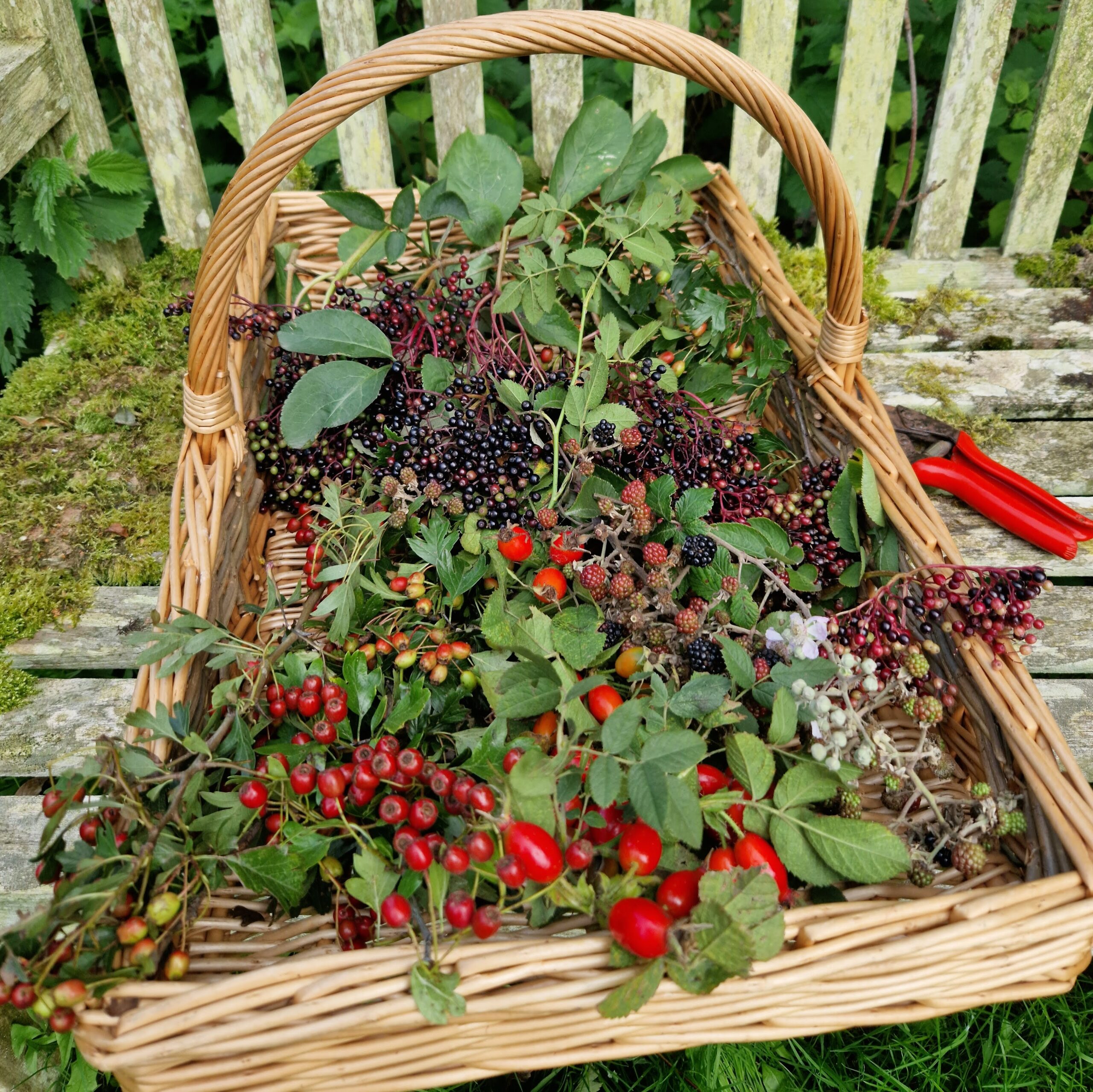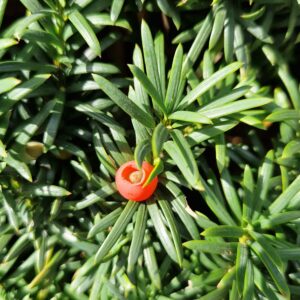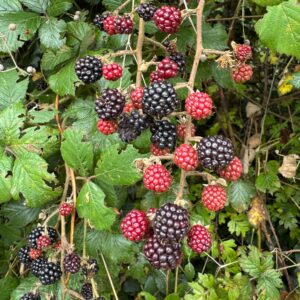IN SEASON | AUTUMN | WILD BERRIES
It’s wild berry season, one of my favourite times of the year for foraging!
The hedgerows here in Ireland are abundant with tasty and nourishing wild fruits at the moment. Most people have probably gone blackberry picking at some stage but there are many more fruits and berries that are ripening or ready for harvesting now, such as elderberries, rose hips, hawthorn berries (haws), sloes and sea buckthorn.
Wild berries are rich in vitamins, particularly vitamin C, and they also have antioxident properties that can help to boost our immune systems at this time of year. They are delicious and versatile and can be used in numerous ways to create tasty and nutritious savoury and sweet dishes, drinks and syrups, jams and preserves, herbal teas and tinctures, and many traditional natural remedies.
Watch out for these easily identifiable berries, growing in gardens, parks, country lanes, woodlands and coastal locations. I will add to the list and write in more detail about the individual varieties and their uses over the coming weeks.
BLACKBERRIES
Rubus fructicosus
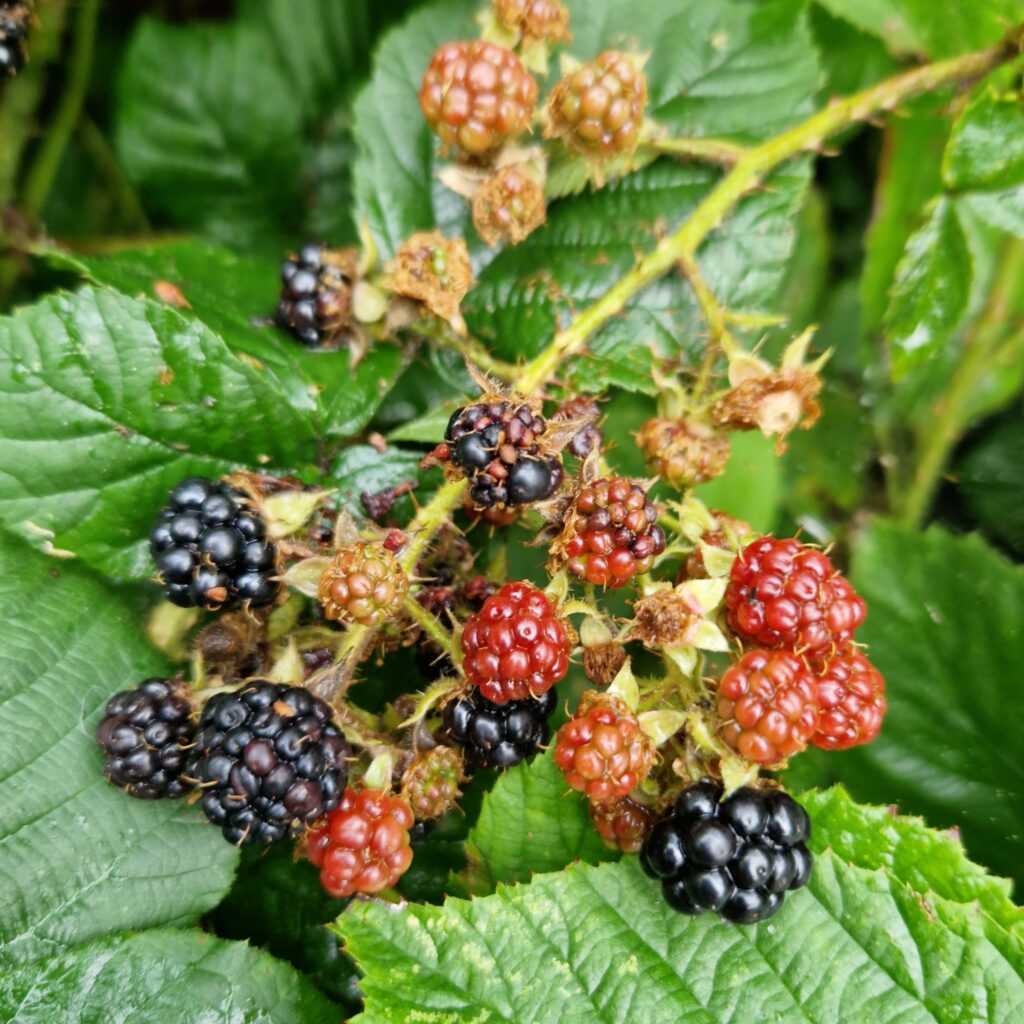
Blackberries are one of the most familiar and easily recognised wild fruits to forage.
The clusters of deep purple-black berries ripen from late summer into autumn and can be found growing abundantly in hedgerows, country lanes, parks and many urban areas.
Rich in vitamin C, fibre and antioxidants, they are traditionally used to support the immune system, aid digestion, soothe sore throats and reduce inflammation.
Delicious eaten straight from the bramble, blackberries can also be used in tarts, crumbles, jams, syrups and cordials.
Over the years I have come up with many inventive and creative ways to use blackberries in sweet and savoury dishes, wild drinks and wild cocktails.
Click on the link below for some ideas and a recipe for making your own blackberry liqueur.
ELDERBERRIES
Sambucus nigra
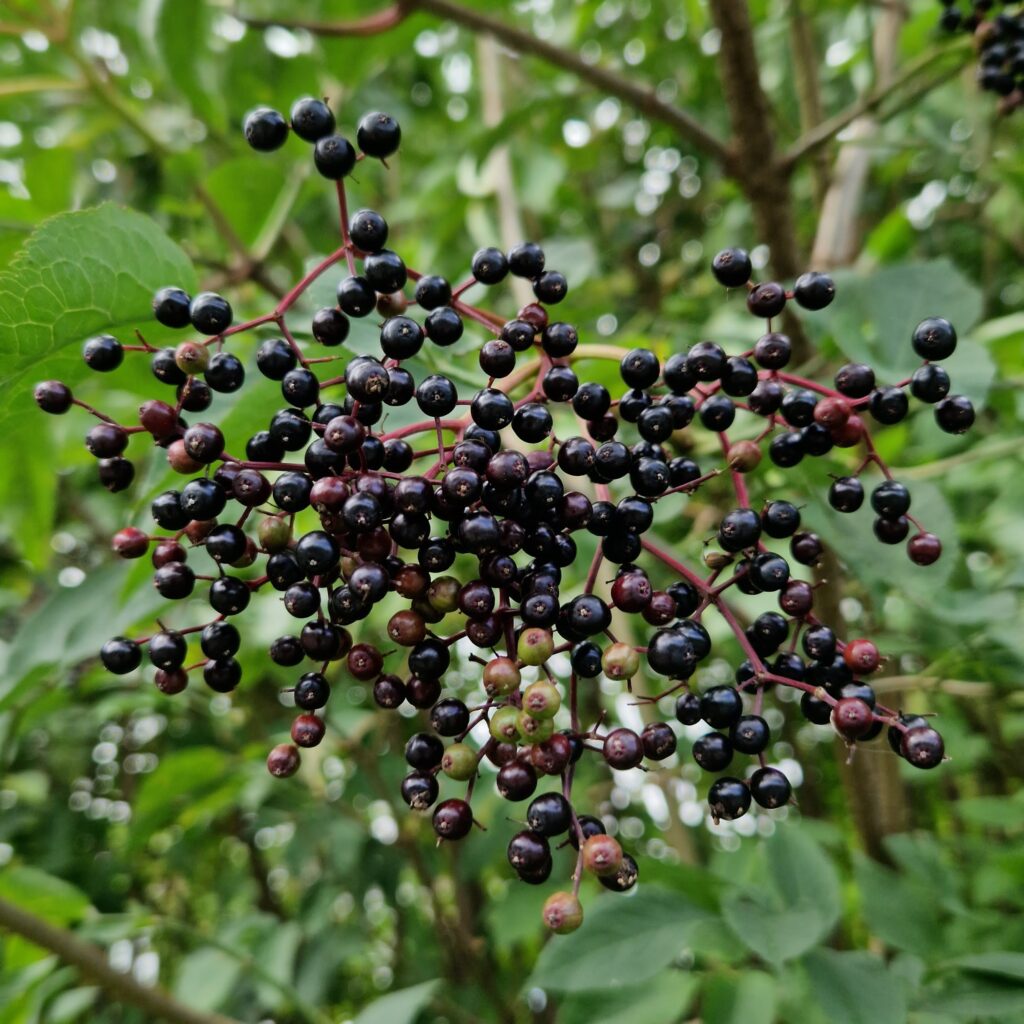
Elderberries grow in clusters of small, dark purple to almost black berries on the elder tree.
They can be found growing along hedgerows and country roads from late August to October. These little berries are rich in vitamin C, antioxidants, and flavonoids, and they are great for boosting our immune systems and warding off winter colds.
I often make a basic elderberry syrup and combine it with other native Irish herbs to make a very effective expectorant cough syrup.
Elderberry seeds are slightly toxic when raw but once cooked they can be safely enjoyed in many sweet and savoury dishes.
The berries also make a really good country wine that is rich and full bodied and was traditionally used as a tonic, due to its antiviral and anti-inflammatory properties.
ROSEHIPS
Rosa canina
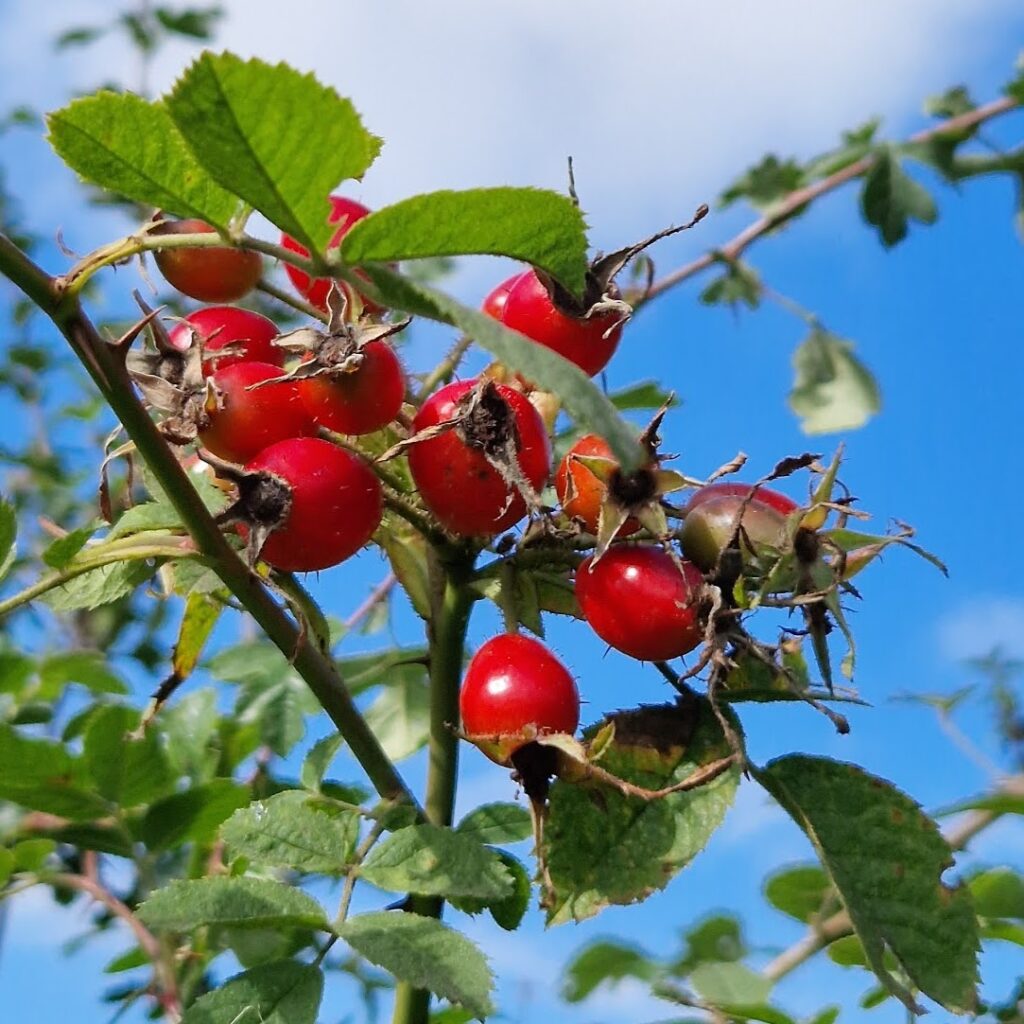
Rosehips can be found on practically every country road or hedgerow in Ireland, from late summer through to autumn.
They are exceptionally rich in vitamin C and rosehip syrup was a traditional home made remedy that was used to ward off colds and fevers in autumn and winter.
Rosehips can be dried to make a tangy, nourishing herbal tea, simmered into syrups or jams, or infused in oils for soothing skin remedies.
However, the fibres around the seeds that are contained within the berry are an irritant so it is important that they are completely removed before ingesting. This can be done by hand after the hips are harvested or by thoroughly straining the final preparation.
HAWTHORN BERRIES
Crataegus monogyna
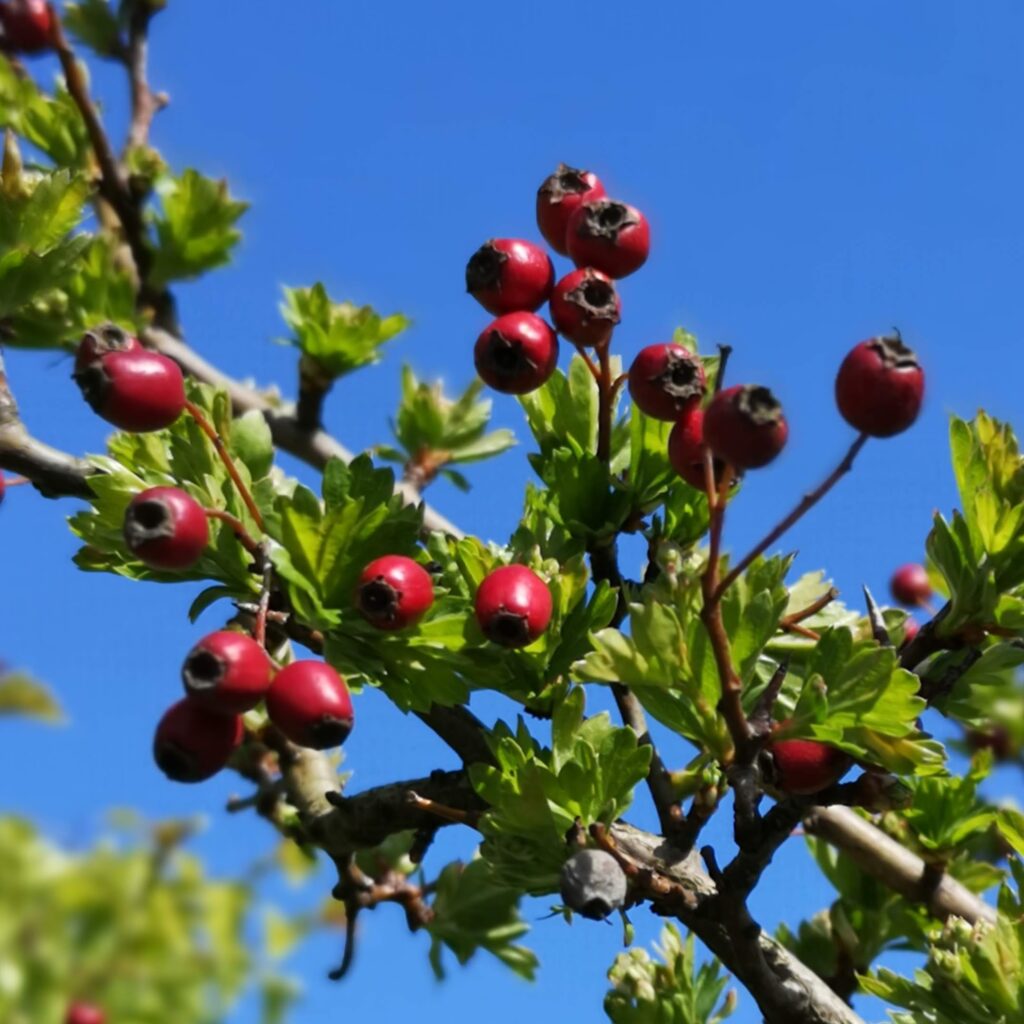
Hawthorn berries, or haws, are small, round red fruits that grow in clusters on the hawthorn tree. Traditionally valued for supporting heart health and circulation, haws are rich in antioxidants, flavonoids, and vitamin C.
They can be used to make jellies, chutneys, or ketchups, or prepared as a gentle herbal tea.
However, they should never be used by anyone with a serious heart condition or anyone who is on conventional heart related medication, without consultation with your health care professional.
SLOES
Prunus spinosa
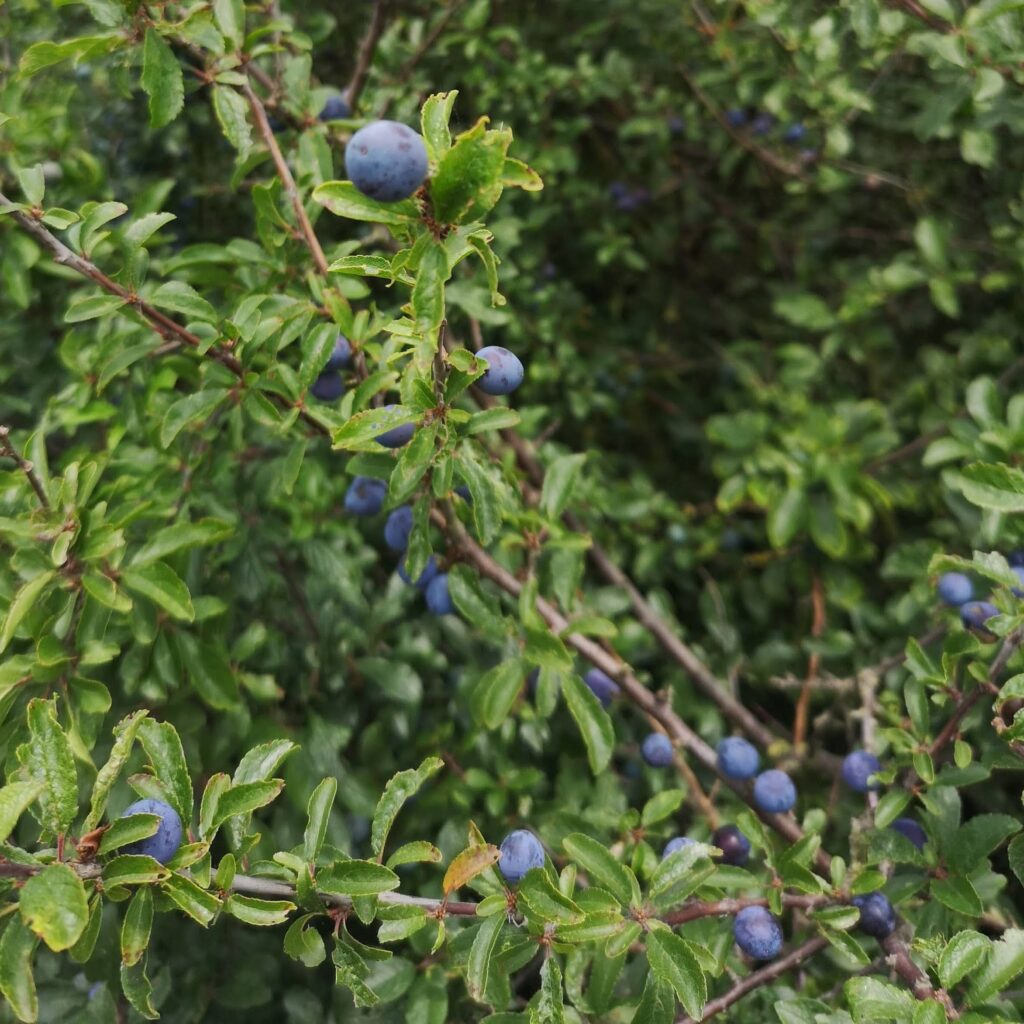
Sloe berries, or sloes, are the small, dark purple fruits of the blackthorn shrub, which is easily identified by its thorny branches, small oval leaves, and white blossom in early spring.
The berries ripen in hedgerows, field margins, and woodland edges from autumn onwards. Naturally high in vitamin C and antioxidants, sloes have been valued for their astringent, immune-supporting, and digestive benefits.
Too sharp to eat raw, they are best used in traditional recipes such as sloe gin, jam or syrup.
SEA BUCKTHORN
Hippophae rhamnoides
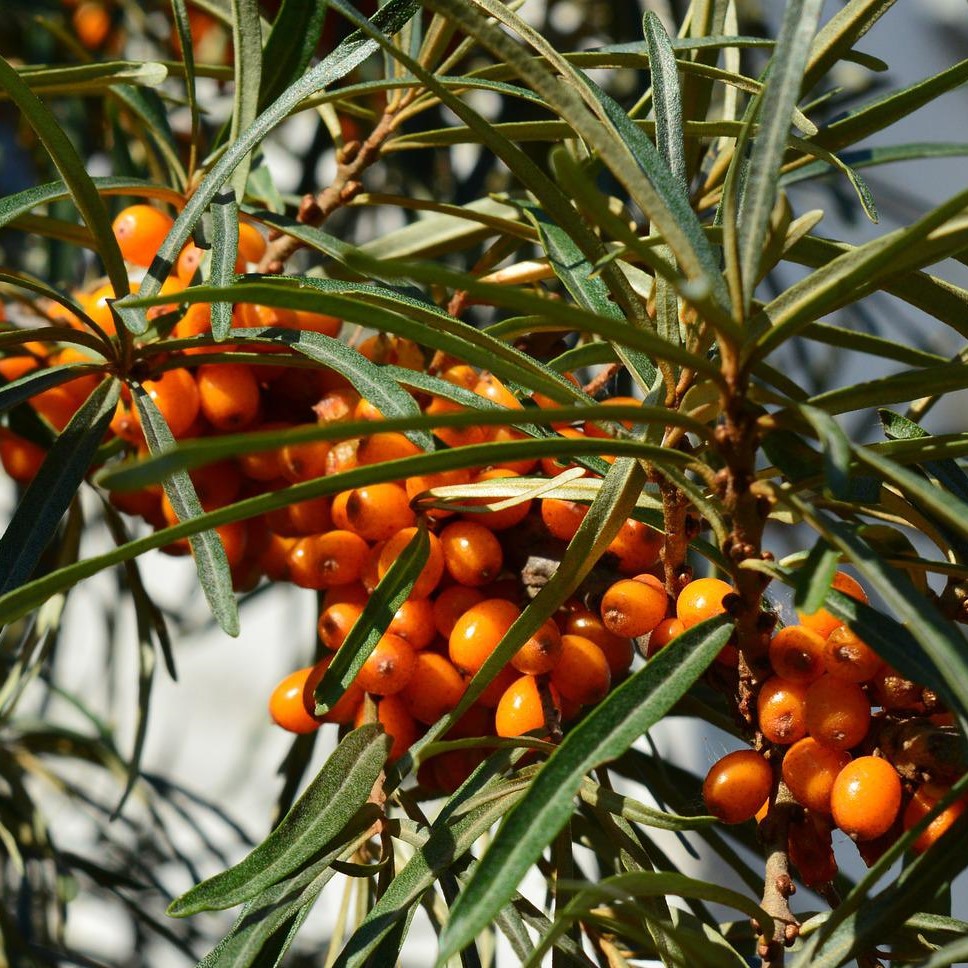
Sea buckthorn berries are striking bright orange fruits that grow in dense clusters along the thorny branches of the sea buckthorn shrub.
Sea buckthorn can be found growing in coastal areas, sand dunes, and scrublands.
The berries are rich in vitamin C and antioxidants, making them highly valued for supporting our immune systems and our skin health.
Although very tart when eaten raw, they can be transformed into juices, syrups, jams, or sauces, and can also be used in traditional herbal remedies.
IMPORTANT WARNING
This information is for educational purposes only and is not intended to replace the advice of a qualified nutritionist or health practitioner.
Never use any wild plant if you are pregnant, have a serious illness or medical condition or are on any medication, without first consulting your medical team.
It is the responsibility of the reader to ensure that any wild plants are 100% correctly identified. If in doubt never use any wild plant for food or medicine.
LEARN MORE
If you would like to learn more about safe and sustainable foraging, and using wild herbs for food and medicine, click on the links below to check out my in person and online workshops.

